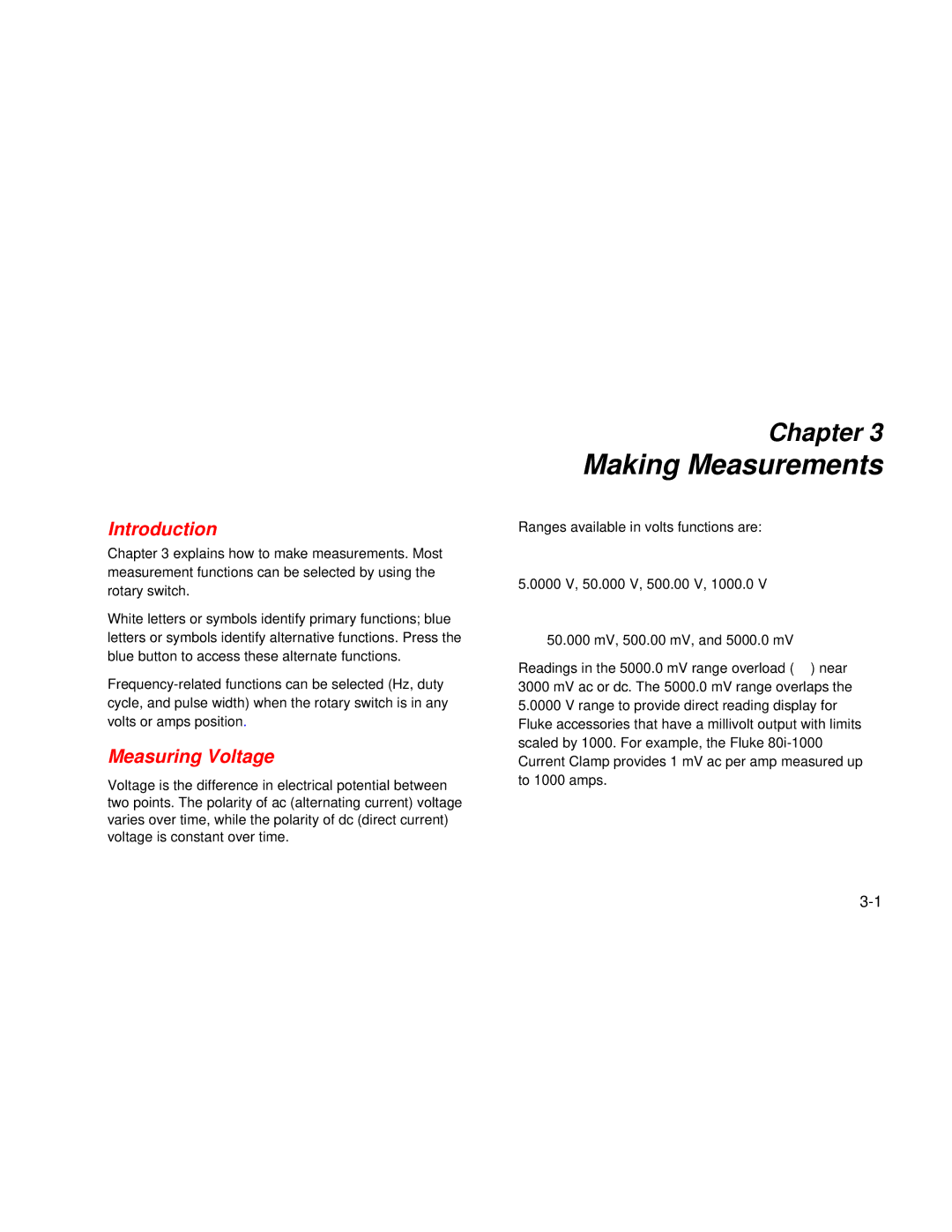Introduction
Chapter 3 explains how to make measurements. Most measurement functions can be selected by using the rotary switch.
White letters or symbols identify primary functions; blue letters or symbols identify alternative functions. Press the blue button to access these alternate functions.
Measuring Voltage
Voltage is the difference in electrical potential between two points. The polarity of ac (alternating current) voltage varies over time, while the polarity of dc (direct current) voltage is constant over time.
Chapter 3
Making Measurements
Ranges available in volts functions are:
•\ $
5.0000 V, 50.000 V, 500.00 V, 1000.0 V
•,m
50.000 mV, 500.00 mV, and 5000.0 mV
Readings in the 5000.0 mV range overload (0L) near 3000 mV ac or dc. The 5000.0 mV range overlaps the 5.0000 V range to provide direct reading display for Fluke accessories that have a millivolt output with limits scaled by 1000. For example, the Fluke
